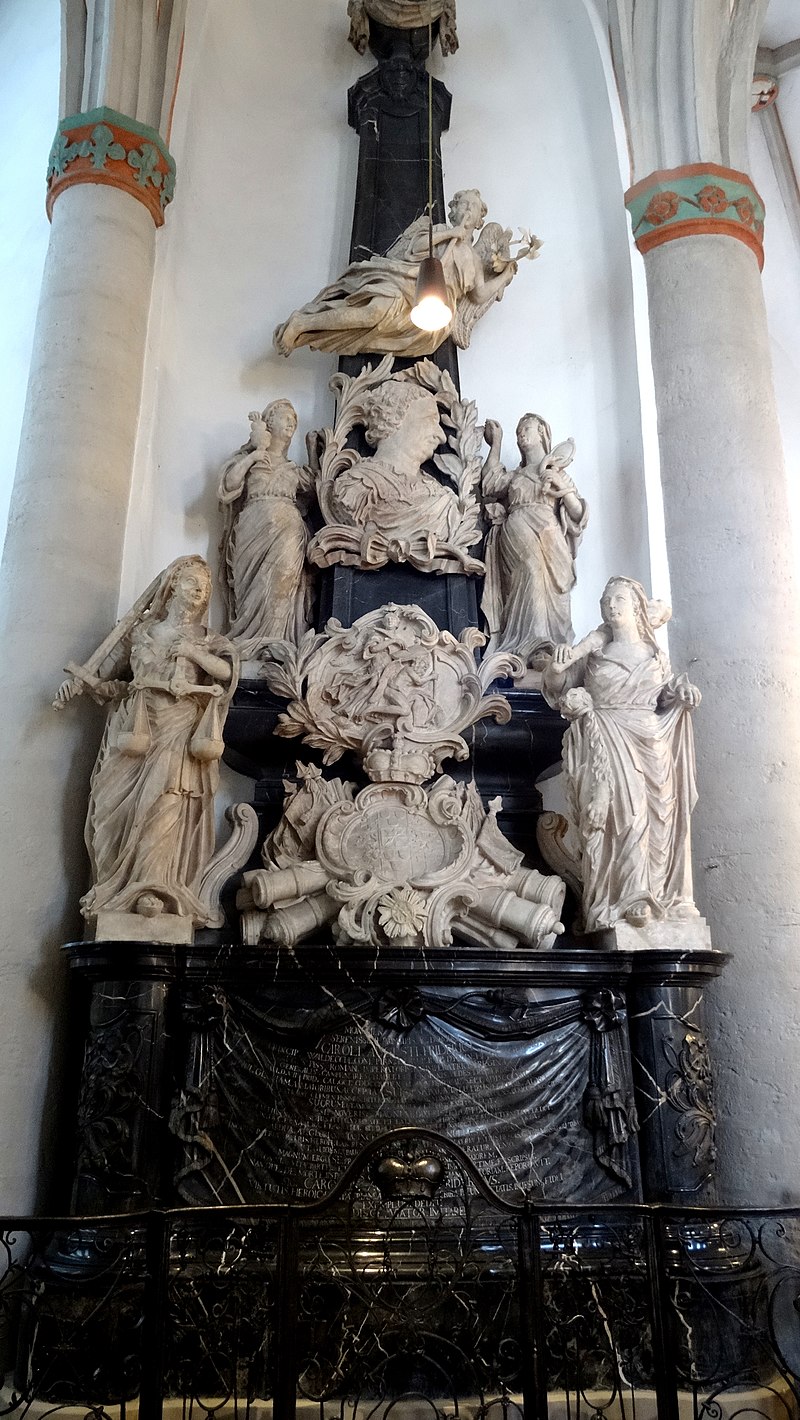by Susan Flantzer © Unofficial Royalty 2021
The County of Waldeck was a county within the Holy Roman Empire since 1180. In 1625, the much smaller County of Pyrmont became part of the much larger County of Waldeck through inheritance and the combined territory was known as the County of Waldeck-Pyrmont. In 1712, Friedrich Anton Ulrich, Count of Waldeck-Pyrmont was elevated to Prince of Waldeck-Pyrmont by Holy Emperor Karl VI.
Friedrich, the last Prince of Waldeck-Pyrmont, abdicated on November 13, 1918, and negotiated an agreement with the government that gave him and his descendants the ownership of the family home Arolsen Castle and Arolsen Forest. Today the territory that encompassed the Principality of Waldeck-Pyrmont is located in the German states of Hesse and Lower Saxony

Credit – Wikipedia
Georg I, Prince of Waldeck and Pyrmont had a short reign, from September 24, 1812 to September 9, 1813. Born on May 6, 1747, in Arolsen, Principality of Waldeck-Pyrmont, now in the German state of Hesse, he was the fourth of the five sons and the fourth of the seven children of Karl August, Prince of Waldeck-Pyrmont and Christiane Henriette of Zweibrücken-Birkenfeld, daughter of Christian III, Count Palatine of Zweibrücken-Birkenfeld and Caroline of Nassau-Saarbrücken.

Georg’s family in 1756; Credit – Wikipedia
Through their mother, Georg and his six siblings were the first cousins of Grand Duke Ludwig II of Hesse and by Rhine, King Friedrich Wilhelm III of Prussia, Grand Duke Karl Friedrich of Saxe-Weimar-Eisenach, and King Ludwig I of Bavaria.
- Prince Karl of Waldeck and Pyrmont (1742 – 1756), died in childhood
- Friedrich Karl August, Prince of Waldeck-Pyrmont (1743 – 1812), unmarried
- Prince Christian August of Waldeck-Pyrmont (1744 – 1798), unmarried, General of the Cavalry in the Austrian Army, Field Marshal in the Portuguese Army
- Princess Caroline of Waldeck-Pyrmont (1748 – 1782), married Peter von Biron, Duke of Courland and Semigallia, no children, divorced
- Princess Luise of Waldeck-Pyrmont (1751 – 1816), married Friedrich August, Duke of Nassau, had seven children
- Prince Ludwig of Waldeck-Pyrmont (1752 – 1793), Major General of the Dutch Cavalry, killed in action

Georg’s wife Auguste of Schwarzburg-Sondershausen; Credit – Wikipedia
On September 12, 1784, at Otterwisch Castle in Otterwisch, Electorate of Saxony, now in the German state of Saxony, Georg married Princess Auguste of Schwarzburg-Sondershausen, daughter of Prince August of Schwarzburg-Sondershausen, the grandson of Christian Wilhelm I, a reigning Prince of Schwarzburg-Sondershausen, and Princess Christine of Anhalt-Bernburg.
Georg and Auguste had thirteen children. Seven of their children died either in childhood or in their early twenties:
- Christiane of Waldeck-Pyrmont (1787 – 1806), Abbess of Schaaken, died at age 19
- Karl of Waldeck-Pyrmont (1788 – 1795), died in childhood
- Georg II, Prince of Waldeck-Pyrmont (1789 – 1845), married Emma of Anhalt-Bernburg-Schaumburg-Hoym, had five children
- Friedrich of Waldeck-Pyrmont (1790 – 1828), morganatically married Ursula Polle who was created Countess of Waldeck, had four children
- Christian of Waldeck-Pyrmont (1792 – 1795), died in early childhood
- Augusta of Waldeck-Pyrmont (1793 – 1794), died in infancy
- Johann of Waldeck- Pyrmont (1794 – 1814), died at age 20
- Ida of Waldeck-Pyrmont (1796 – 1869), married Georg Wilhelm Prince of Schaumburg-Lippe, had nine children
- Wolrad of Waldeck-Pyrmont (1798 – 1821), died at age 23
- Mathilde of Waldeck-Pyrmont (1801 – 1825), married Eugen of Württemberg, had three children, died during her fourth pregnancy
- Karl Christian of Waldeck-Pyrmont (1803 – 1846), married Amalie of Lippe-Biesterfeld, had one child
- Karoline Christiane of Waldeck-Pyrmont (1804 – 1806), died in early childhood
- Hermann of Waldeck-Pyrmont (1809 – 1876), married Agnes Teleki de Szék, had no children
The Principality of Waldeck-Pyrmont was heavily in debt during the reign of Friedrich Karl August, Prince of Waldeck-Pyrmont, Georg’s unmarried elder brother. In 1805, Friedrich Karl August unsuccessfully attempted to sell the Pyrmont as a cost-cutting measure. Instead, he decided to divide the Principality of Waldeck-Pyrmont, giving his brother Georg Pyrmont, while he kept Waldeck.

Princely Mausoleum (on the right) and Cemetery; Credit – www.findagrave.com
On September 24, 1812, after the death of his childless elder brother, 65-year-old Georg succeeded him and Waldeck and Pyrmont were reunited. Because of his age and perhaps illness, Georg knew that he would not be able to reign for long and so he decided to stay in Pyrmont where he died on September 9, 1813. He was buried in the Princely Mausoleum at Schloss Rhoden (link in German) in Rhoden, Principality of Waldeck-Pyrmont, now in the German state of Hesse. Georg’s wife Auguste survived him by thirty-six years, dying on December 26, 1849, aged 81, in Arolsen, Principality of Waldeck-Pyrmont, now in the German state of Hesse. She was buried with her husband in the Princely Mausoleum at Schloss Rhoden.
This article is the intellectual property of Unofficial Royalty and is NOT TO BE COPIED, EDITED, OR POSTED IN ANY FORM ON ANOTHER WEBSITE under any circumstances. It is permissible to use a link that directs to Unofficial Royalty.
Waldeck-Pyrmont Resources at Unofficial Royalty
- Principality of Waldeck-Pyrmont Index
- Profiles: Princes and Consorts of Waldeck and Pyrmont
- Waldeck and Pyrmont Royal Burial Sites
Works Cited
- De.wikipedia.org. 2020. Georg I. (Waldeck-Pyrmont). [online] Available at: <https://de.wikipedia.org/wiki/Georg_I._(Waldeck-Pyrmont)> [Accessed 2 December 2020].
- En.wikipedia.org. 2020. George I, Prince Of Waldeck And Pyrmont. [online] Available at: <https://en.wikipedia.org/wiki/George_I,_Prince_of_Waldeck_and_Pyrmont> [Accessed 2 December 2020].
- Flantzer, Susan, 2020. Christiane Henriette of Zweibrücken-Birkenfeld, Princess of Waldeck-Pyrmont, Regent of Waldeck-Pyrmont. [online] Unofficial Royalty. Available at: <https://www.unofficialroyalty.com/christiane-henriette-of-zweibrucken-birkenfeld-princess-of-waldeck-pyrmont-regent-of-waldeck-pyrmont/> [Accessed 1 December 2020].
- Flantzer, Susan, 2020. Karl August, Prince of Waldek-Pyrmont. [online] Unofficial Royalty. Available at: <https://www.unofficialroyalty.com/karl-august-prince-of-waldeck-and-pyrmont/> [Accessed 1 December 2020].
- Flantzer, Susan, 2020. Royal Burial Sites Of The Principality Of Waldeck-Pyrmont. [online] Unofficial Royalty. Available at: <https://www.unofficialroyalty.com/former-monarchies/german-royals/principality-of-waldeck-and-pyrmont/royal-burial-sites-of-the-principality-of-waldeck-pyrmont/> [Accessed 30 November 2020].

















